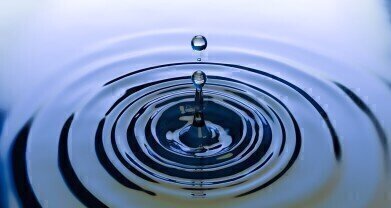Water/Wastewater
New Nanoparticle Treatment Technique Produces Cleaner, Safer Water
Aug 26 2015
A partnership of German and American scientists has come up with a novel way to extract unwanted contaminants from water, making it cleaner and safer to drink.
The technique, which can also be applied to soil to remove pollutants from it (thus rendering it more arable and amenable to crop-growing), involves nanoparticles and shining ultraviolet (UV) light on the substance. It was developed through a collaboration between the Massachusetts Institute of Technology (MIT) in the USA and the University of Regensburg in Germany, and the findings were published in the scientific journal Natural Communications.
Novel Use of Nanoparticles
Nanoparticles have been used in the treatment of water in the past, though never quite so effectively. This article from 2008 discusses in detail the practice of Nanoparticle Tracking Analysis (NTA), a method of characterising sub-micron particles in the hope of solving solubility problems in various liquids.
In terms of water treatment itself, nanoparticles have also been used before, but previously in conjunction with industrial-strength magnets. This method, though partially effective, often left behind a lot of unwanted toxic residue in the treated water.
The new method, however, utilises UV light instead of magnets. After binding themselves to the unwanted elements of water or soil (i.e. pesticides, herbicides or other unwanted pollutants), the nanoparticles are then exposed to UV radiation. This causes the nanoparticles to clump together, solidifying the contaminants into microscopic lumps, which can easily be extricated from the sample, along with the nanoparticles themselves. In this manner, no toxic after-product was left behind and the method achieved 100% efficacy in samples tested, as well being more cost-effective, too.
Good News for Sanitation and Irrigation
The results of the study were tested by placing zebrafish embryos into the sample after the process. Only embryos placed in the nanoparticle-treated liquid were able to survive, proving that toxicity had been removed here where other methods had failed.
Though the teams refrained from testing the potability of the water by drinking it themselves on this occasion, sanitised drinking water is the long-term aim of the project. “That’s what we had in mind when we thought about the application in the first place,” explained Ferdinand Brandl to IFL Science. It’s also thought that eventually, the technique could also be used to treat water used for irrigation purposes or other agricultural needs.
However, Brandl (who is the lead author of the paper from the University of Regenburg) was quick to state that he himself would not personally be pursuing the project any further, instead turning his attention to other matters. “If someone really wants to pursue this project, it would be possible to have some pilot scale or study applications in a few years,” he went on to say. “It’s not very complicated to scale up the process and make larger quantities.”
Digital Edition
IET 34.2 March 2024
April 2024
Gas Detection - Biogas batch fermentation system for laboratory use with automatic gas analysis in real time Water/Wastewater - Upcycling sensors for sustainable nature management - Prist...
View all digital editions
Events
Apr 30 2024 Melbourne, Australia
Apr 30 2024 Birmingham, UK
May 03 2024 Seoul, South Korea
May 05 2024 Seville, Spain
May 06 2024 Minneapolis, MN, USA


















